Netty入门使用教程
原创:转载需注明原创地址 https://www.cnblogs.com/fanerwei222/p/11827026.html
本文介绍Netty的使用, 结合我本人的一些理解和操作来快速的让初学者入门Netty, 理论知识会有, 但是不会太深入, 够用即可, 仅供入门! 需要想详细的知识可以移步Netty官网查看官方文档!
理论知识 : Netty提供异步的、事件驱动的网络应用程序框架和工具,用以快速开发高性能、高可靠性的网络服务器和客户端程序
当然, 我们这里主要是用Netty来发送消息, 接收消息, 测试一下demo, 更厉害的功能后面再慢慢发掘, 我们先看看这玩意怎么玩, 后面再深入
需要工具和Java类:
netty-4.1.43
netty服务器类 SayHelloServer.java
netty服务端处理器类 SayHelloServerHandler.java
netty客户端类 SayHelloClient.java
netty客户端处理器类 SayHelloClientHandler.java
服务器main方法测试类 MainNettyServer.java
客户端main方法测试类 MainNettyClient.java
首先先来一张演示图, 最下面也会放:
我们看完以下部分就能实现这个东西了!
话不多说, 先贴代码:
package netty.server; import io.netty.bootstrap.ServerBootstrap; import io.netty.channel.ChannelFuture; import io.netty.channel.ChannelInitializer; import io.netty.channel.ChannelOption; import io.netty.channel.EventLoopGroup; import io.netty.channel.nio.NioEventLoopGroup; import io.netty.channel.socket.SocketChannel; import io.netty.channel.socket.nio.NioServerSocketChannel; import netty.handler.SayHelloServerHandler; /** * sayhello 服务器 */ public class SayHelloServer { /** * 端口 */ private int port ; public SayHelloServer(int port){ this.port = port; } public void run() throws Exception{ /** * Netty 负责装领导的事件处理线程池 */ EventLoopGroup leader = new NioEventLoopGroup(); /** * Netty 负责装码农的事件处理线程池 */ EventLoopGroup coder = new NioEventLoopGroup(); try { /** * 服务端启动引导器 */ ServerBootstrap server = new ServerBootstrap(); server .group(leader, coder)//把事件处理线程池添加进启动引导器 .channel(NioServerSocketChannel.class)//设置通道的建立方式,这里采用Nio的通道方式来建立请求连接 .childHandler(new ChannelInitializer<SocketChannel>() { //构造一个由通道处理器构成的通道管道流水线 @Override protected void initChannel(SocketChannel socketChannel) throws Exception { /** * 此处添加服务端的通道处理器 */ socketChannel.pipeline().addLast(new SayHelloServerHandler()); } }) /** * 用来配置一些channel的参数,配置的参数会被ChannelConfig使用 * BACKLOG用于构造服务端套接字ServerSocket对象, * 标识当服务器请求处理线程全满时, * 用于临时存放已完成三次握手的请求的队列的最大长度。 * 如果未设置或所设置的值小于1,Java将使用默认值50 */ .option(ChannelOption.SO_BACKLOG, 128) /** * 是否启用心跳保活机制。在双方TCP套接字建立连接后(即都进入ESTABLISHED状态) * 并且在两个小时左右上层没有任何数据传输的情况下,这套机制才会被激活。 */ .childOption(ChannelOption.SO_KEEPALIVE, true); /** * 服务端绑定端口并且开始接收进来的连接请求 */ ChannelFuture channelFuture = server.bind(port).sync(); /** * 查看一下操作是不是成功结束了 */ if (channelFuture.isSuccess()){ //如果没有成功结束就处理一些事情,结束了就执行关闭服务端等操作 System.out.println("服务端启动成功!"); } /** * 关闭服务端 */ channelFuture.channel().closeFuture().sync(); System.out.println("服务端即将关闭!"); } finally { /** * 关闭事件处理组 */ leader.shutdownGracefully(); coder.shutdownGracefully(); System.out.println("服务端已关闭!"); } } }
package netty.handler; import io.netty.buffer.ByteBuf; import io.netty.buffer.Unpooled; import io.netty.channel.ChannelHandlerContext; import io.netty.channel.ChannelInboundHandlerAdapter; import io.netty.util.CharsetUtil; /** * 服务端入站处理器适配器的继承类 * 用来处理服务端的一些事情 * 根据需要来实现一些方法 */ public class SayHelloServerHandler extends ChannelInboundHandlerAdapter { @Override public void channelRead(ChannelHandlerContext ctx, Object msg) throws Exception { ByteBuf buf = (ByteBuf) msg; System.out.println("直接打印服务端需要处理的信息: " + buf.toString(CharsetUtil.UTF_8)); ByteBuf res = Unpooled.wrappedBuffer(new String("塔台收到!塔台收到!信息如下, 请确认 " + buf.toString(CharsetUtil.UTF_8)).getBytes()); /** * 给客户端回复消息 */ ctx.writeAndFlush(res); } /** * 连接成功后,自动执行该方法 * @param ctx * @throws Exception */ @Override public void channelActive(ChannelHandlerContext ctx) throws Exception { System.out.println("服务器首次处理!"); /** * 这种发送的消息格式是错误的!!!!! * 消息格式必须是ByteBuf才行!!!!! */ ctx.writeAndFlush("Hello is server !"); } @Override public void exceptionCaught(ChannelHandlerContext ctx, Throwable cause) throws Exception { super.exceptionCaught(ctx, cause); /** * 异常捕获 */ cause.printStackTrace(); ctx.close(); } }
package netty.client; import io.netty.bootstrap.Bootstrap; import io.netty.channel.*; import io.netty.channel.nio.NioEventLoopGroup; import io.netty.channel.socket.SocketChannel; import io.netty.channel.socket.nio.NioSocketChannel; import netty.handler.SayHelloClientHandler; /** * sayhello 客户端 */ public class SayHelloClient { private int port; private String host = "127.0.0.1"; private Channel channel; public SayHelloClient(int port){ this.port = port; } /** * 客户端运行方法 * @throws InterruptedException */ public void run() throws InterruptedException { /** * 负责装客户端的事件处理线程池 */ EventLoopGroup clientWorker = new NioEventLoopGroup(); try { /** * netty客户端引导启动器 */ Bootstrap bootstrap = new Bootstrap(); bootstrap .group(clientWorker)//把事件处理线程池添加进启动引导器 .channel(NioSocketChannel.class)//设置通道的建立方式,这里采用Nio的通道方式来建立请求连接 //.option(ChannelOption.SO_KEEPALIVE, true) .handler(new ChannelInitializer<SocketChannel>() { @Override protected void initChannel(SocketChannel socketChannel) throws Exception { /** * 此处添加客户端的通道处理器 */ socketChannel.pipeline().addLast(new SayHelloClientHandler()); } }); /** * 客户端绑定端口并且开始发起连接请求 */ ChannelFuture future = bootstrap.connect(host, port).sync(); if (future.isSuccess()){ System.out.println("客户端连接服务器成功!"); } /** * 将通道设置好, 以便外面获取 */ this.channel = future.channel(); /** * 关闭客户端 */ future.channel().closeFuture().sync(); System.out.println("客户端即将关闭!"); } finally { /** * 关闭事件处理组 */ clientWorker.shutdownGracefully(); System.out.println("客户端已关闭!"); } } public Channel getChannel(){ return this.channel; } }
package netty.handler; import io.netty.buffer.ByteBuf; import io.netty.buffer.Unpooled; import io.netty.channel.ChannelHandlerContext; import io.netty.channel.ChannelInboundHandlerAdapter; import java.nio.charset.Charset; import java.util.Date; /** * sayhello 客户端处理器 */ public class SayHelloClientHandler extends ChannelInboundHandlerAdapter { /** * 通道信息读取处理 * @param ctx * @param msg */ @Override public void channelRead(ChannelHandlerContext ctx, Object msg) { ByteBuf m = (ByteBuf) msg; // 将消息转化成bytebuf try { System.out.println("客户端直接打印接收到的消息: " + m.toString(Charset.defaultCharset())); long currentTimeMillis = (m.readUnsignedInt() - 2208988800L) * 1000L; System.out.println(new Date(currentTimeMillis)); /** * 给服务端回复消息 */ ctx.writeAndFlush("客户端收到! 消息为: " + m.toString(Charset.defaultCharset())); } finally { m.release(); } } /** * 连接成功后,自动执行该方法 * @param ctx * @throws Exception */ @Override public void channelActive(ChannelHandlerContext ctx) throws Exception { /** * 往服务端发送消息 * 消息格式必须是ByteBuf才行!!!!! * 如果是其他格式服务端是接收不到的!!!! */ String helo = "你好呀!"; ByteBuf byteBuf = Unpooled.wrappedBuffer(helo.getBytes()); ctx.channel().writeAndFlush(byteBuf); System.out.println("首次连接完成!"); } @Override public void exceptionCaught(ChannelHandlerContext ctx, Throwable cause) { cause.printStackTrace(); ctx.close(); } }
package netty; import netty.server.SayHelloServer; /** * Netty server 使用main类 */ public class MainNettyServer { /** * 端口 */ private static int port = 8686; public static void main(String[] args) throws Exception { /** * 启动netty服务器 */ SayHelloServer sayHelloServer = new SayHelloServer(port); sayHelloServer.run(); } }
package netty; import io.netty.buffer.ByteBuf; import io.netty.buffer.Unpooled; import io.netty.channel.Channel; import netty.client.SayHelloClient; import java.util.Scanner; /** * 客户端main方法类 */ public class MainNettyClient { public static void main(String[] args) throws InterruptedException { /** * 创建netty客户端 */ SayHelloClient client = new SayHelloClient(8686); /** * 新建一个线程让它单独去跑,我们可以main方法测试一下发送消息和接受消息 */ Thread clientThread = new Thread(new Runnable() { @Override public void run() { try { client.run(); } catch (InterruptedException e) { e.printStackTrace(); } } }); clientThread.start(); /** * 如果不新建一个线程去跑客户端的话, 以下的代码就执行不到 * 这里用while是因为客户端的channel并不能立马生成, 会在client启动后一段时间才生成获取到 * 所以需要延迟一点获取channel, 否则channel为null */ Channel channel = null; boolean isStart = false; while (!isStart) { if (null != client.getChannel()) { channel = client.getChannel(); isStart = true; } } String helo = "你好呀!我这里是客户端, 收到请回答"; ByteBuf byteBuf = Unpooled.wrappedBuffer(helo.getBytes()); channel.writeAndFlush(byteBuf); /** * 我们通过控制台输入来给服务端发送消息 * 此处只做模拟使用 */ for (int i = 0; i < 10 ; i++) { Scanner scanner = new Scanner(System.in); String text = scanner.nextLine(); channel.writeAndFlush(Unpooled.wrappedBuffer(text.getBytes())); } } }
接下来我们来使用一下看看, 我们用客户端控制台输入消息和服务端"对话": (gif录制软件-->ScreenToGif)
首先我们把项目打包成jar包, 步骤如下:(eclipse的自行百度, 此处用的是IDEA)
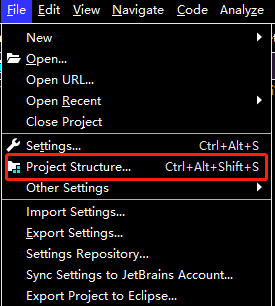
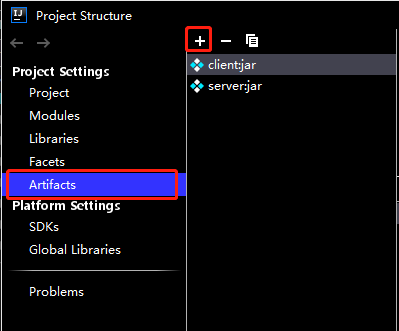
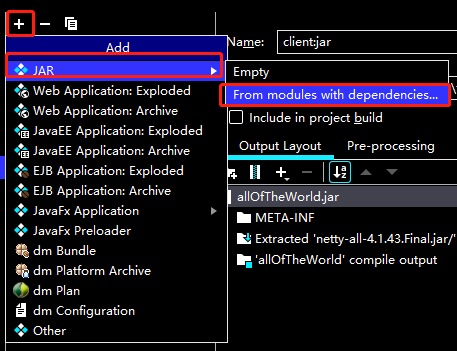
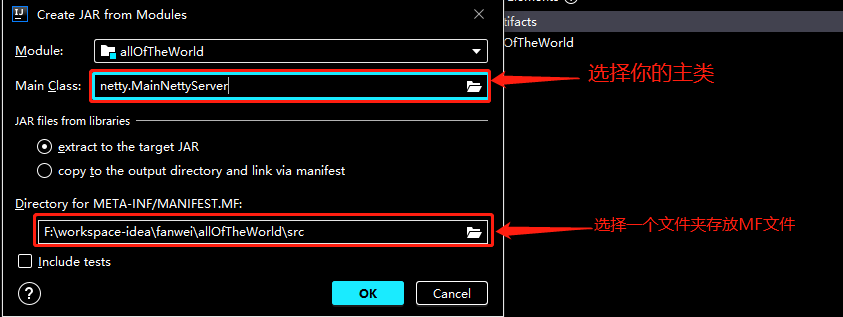
保存之后
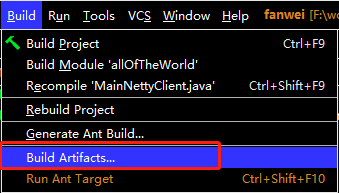
去输出的文件目录找到jar包即可!
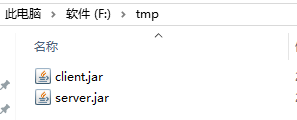
我放在了一起, 然后开始用CMD运行!
运行命令 : java -jar client.jar
开两个CMD演示!
左边是服务器, 右边是客户端, 直接看图!
演示到此结束! over !



